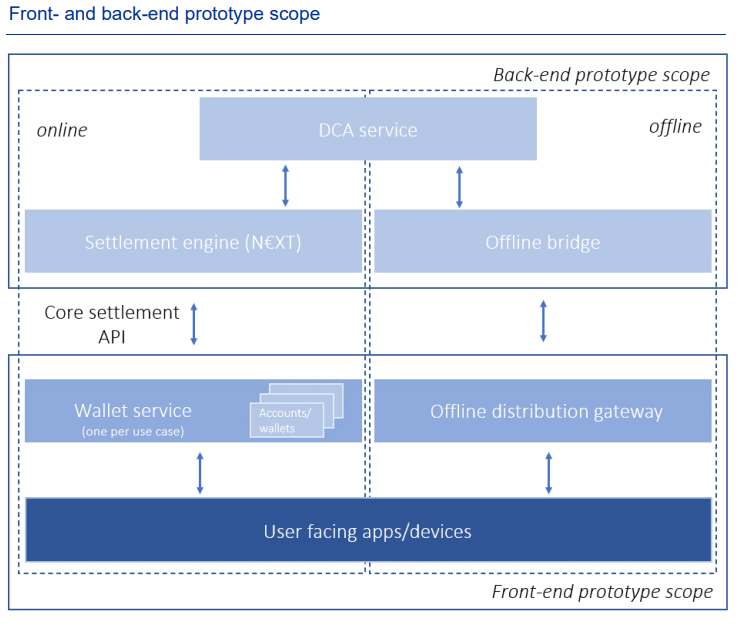From July 2022 to February 2023 the European Central Bank (ECB) conducted a prototyping exercise to test how design choices for the digital euro could be technically implemented and integrated into the existing European payments landscape. The tests showed that it is possible to smoothly integrate them, while leaving ample scope for innovative features and technologies.
The findings also confirmed that a digital euro could in principle work both online and offline, using independent designs. This would also increase the resilience of the digital euro. The prototyping exercise is an important part of the investigation phase of the digital euro project. The investigation phase commenced in October 2021 and will be concluded in autumn 2023.
The prototyping exercise included the development of a single back end – i.e. a settlement engine – designed by the Eurosystem, and five different front-end prototypes – i.e. user interfaces. The back-end prototype was not intended to be the final design, but was an experimental version to test and to learn from.
For the back-end prototype, the Eurosystem developed a centralized settlement engine (N€XT), based on an unspent transaction output (UTXO) data model commonly used for transactions with digital currencies. The tests showed that this model allows for fast and efficient validation of transactions. This system proved capable of supporting different types of transaction, while protecting users’ privacy by not revealing their payment patterns or account balances to the Eurosystem.
The back-end prototype included a so-called offline bridge which provided an interface to be used by the front end for funding and defunding operations, as well as the necessary connection to central bank liquidity sources: the digital euro Dedicated Cash Accounts – DCAs – of the intermediaries, which were shared with the back end for the online use cases.


